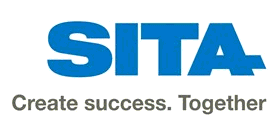 Airlines: Smart technology will be fundamental
Airlines: Smart technology will be fundamental
Speaking after the Aviation Week webinar event Sebastien Fabre, Vice-President Airline & Airport, SITA said: “The past few weeks have seen airlines across the globe tentatively take to the skies. This is reflected in a resumption in activity across our network and improved baggage volumes, up 55% month-on-month in May where volumes were at a record low.”
However, Fabre noted that recovery would be slow. “Our industry must transform the passenger experience to increase traveler safety while balancing economic pressures from slow customer demand. To successfully walk this tightrope and navigate a return to the skies for viable volumes of passengers, airports and airlines need to assimilate new information from governments and health officials, adapt operations immediately and automate processes permanently.”
SITA has introduced solutions that allow passengers to use their mobile device as a remote control for touchpoints such as self-bag drop and check-in kiosks, removing the need to touch any airport equipment. "For example, at San Francisco Airport, we have SITA Flex which enables a full mobile and touchless passenger journey. This means travelers can print bag tags from their mobile phone on self-service bag points.” Added Fabre.
He noted that technology would be fundamental helping airlines and airports to be compliant with new and fast-changing regulations to restore passenger’s confidence in flying. New preventive measures aimed at limiting risk in the airport and onboard will require a new approach to passenger management.
Fabre stated that SITA was rapidly rolling out new solutions that addressed the above challenges, complementing short term hygiene measures such as the use of masks and gloves. These solutions centered on three key areas:
Distancing: Using real-time monitoring technologies along with predictive analytics, SITA can ensure appropriate distancing between passengers at key points across the airport. Predictive analytics will also support more proactive planning. There is also an opportunity to extend the boundaries of the airport where key steps such as check-in and bag drop are managed before arriving at the terminal through a passenger’s mobile.
Hygiene and Sanitation: SITA is helping reduce the risk of infection by avoiding contact at key touchpoints. Using a combination of biometric and mobile solutions, passengers no longer have to touch a kiosk or surface, managing their journey from their phone.
Health checks: In addition to integrating health or thermal checks into key touchpoints such as check-in kiosks, governments will – by leveraging SITA’s risk management solutions – be able to use pre-boarding check (Advance Passenger Processing) and perform analytics on passenger journey data to identify and mitigate potential health risks.
He noted for the airports that are not equipped with the native mobile platform, SITA uses technology to remotely control self-service devices such as kiosks with a mobile phone, removing the need to touch any airport equipment.
Speaking at the webinar, Jeremy Springall, Vice-President Border Management, SITA said: “We are seeing specific regions wishing to allow limited movement within zones first, for example, the trans-Tasman bubble. For governments, this requires an information-driven approach based on real-time data and responsiveness to handle rapidly changing situations.
“A critical element will be for governments to harmonize the approach to checking the validity of health status and sharing this information effectively. Many governments are taking a layered approach to border management, starting well in advance of travel, to identify high-risk passengers before arrival in the destination country, in turn easing the restrictions for low-risk travelers. It’s crucial that health checks in terms of a health ETA or declaration are performed, perhaps up to 72 hours before departure. We’re already starting to see this happen around the world in countries like Thailand and Singapore.”
